 It is important to note that leadership and management are similar yet different in nature. According to Horwitz & Klontz (2013) management is defined as a process that helps organizations to meet their goals through working with individuals and the resources within the organization. It has three major characteristics that include: a series of continuous as well as related activities, it is concentrated on meeting the goals of an organization and meets the goals by being able to work with people and the resources in the organization (Taylor et al 2015). On the other hand, leadership is considered as the ability of a person to inspire or to have an influence on others to meet organizational goals. This means that leaders have followers.
It is important to note that leadership and management are similar yet different in nature. According to Horwitz & Klontz (2013) management is defined as a process that helps organizations to meet their goals through working with individuals and the resources within the organization. It has three major characteristics that include: a series of continuous as well as related activities, it is concentrated on meeting the goals of an organization and meets the goals by being able to work with people and the resources in the organization (Taylor et al 2015). On the other hand, leadership is considered as the ability of a person to inspire or to have an influence on others to meet organizational goals. This means that leaders have followers.
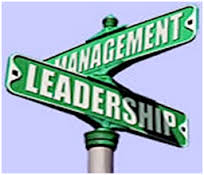 In a research by Horwitz and Klontz (2013) they evaluated the distinction between the leaders and the managers. The findings showed that how they both motivate individuals is a major distinction between the two, the way they think or act. Managers have been considered to place more emphasis on control, how to solve issues, goals and targets. In so doing, they are able to combine the various conflicting ideas so that people accept to them but then, the leaders are quite different to this. Leaders offer a new approach and create new issues for discussion. They develop visions, influence culture in the organizations and then inspire others. Ibra and Hansen (2011) asserts that leaders can be viewed to have administrative work and the managers find it essential to lead others so that some work is done.
In a research by Horwitz and Klontz (2013) they evaluated the distinction between the leaders and the managers. The findings showed that how they both motivate individuals is a major distinction between the two, the way they think or act. Managers have been considered to place more emphasis on control, how to solve issues, goals and targets. In so doing, they are able to combine the various conflicting ideas so that people accept to them but then, the leaders are quite different to this. Leaders offer a new approach and create new issues for discussion. They develop visions, influence culture in the organizations and then inspire others. Ibra and Hansen (2011) asserts that leaders can be viewed to have administrative work and the managers find it essential to lead others so that some work is done.
Based on the CMI, there is no effective style of leadership or management but the approach to leadership and management is shaped by the environment or circumstance in which an organization is. Note that there are different types of subordinates and this implies that it is not possible for one leadership or management style to work. It follows that the most effective way to leadership is chosen in order to manage the subordinates. Over the past, Blake and Mouton management grid has been critical in examining the needs of managers in completing a given job as well as concern on the subordinates have an impact on the style of management. According to Blake and Moulton, style of management can be: team management, middle of the road management, country club as a form of leadership, authority and impoverished (Taylor et al 2015). Out of this, team management is viewed as being more effective. This is a more common style of management as in the workforce one expects to have a particular style of leadership and management.
I accept that command and control is not viewed as the most effective style of management by organizations today. Recent investigations, show that millennials that are 50 % within the workforce look for five major things among their senior and include: flexibility with the work schedule, coaching, honesty, inspirational and help in formal development.
 Although it is possible to note that some the major things discussed above can the in “team development”, it is likely that the others cannot be. Taking assumptions that present workforce has millennial subordinates which falls into Kellerman’s five kinds of leadership means that we are concerned on what they need. Situational leadership place focus on managing individuals based on the kind of situation that one finds them in and this is in line to the CMI view suggested in 2013.
Although it is possible to note that some the major things discussed above can the in “team development”, it is likely that the others cannot be. Taking assumptions that present workforce has millennial subordinates which falls into Kellerman’s five kinds of leadership means that we are concerned on what they need. Situational leadership place focus on managing individuals based on the kind of situation that one finds them in and this is in line to the CMI view suggested in 2013.
According to CMI (2013) no single form of leadership can fit in all situations. Hence, availability of the situational form of leadership implies that various situations call for change of the style to suit the given setting that relates to competency and also development in the subordinates which would be a good approach.
 For instance, Tom Cook of Apple uses democratic form of leadership because he has been able to adopt the previous practices on entrepreneurship in the company to come up with a unique blend where he majorly focuses on the existing products and foster the business as well as relationships with employees. However, this kind of management style may not be adequate to all the various kinds of organizations faced with issues on accountability. This is in contrast to the former CEO Steve Jobs who was visionary, charismatic and always thoughtful by the employees of Apple. This form of leadership was control in the decision making and less input from the members of the organization.
For instance, Tom Cook of Apple uses democratic form of leadership because he has been able to adopt the previous practices on entrepreneurship in the company to come up with a unique blend where he majorly focuses on the existing products and foster the business as well as relationships with employees. However, this kind of management style may not be adequate to all the various kinds of organizations faced with issues on accountability. This is in contrast to the former CEO Steve Jobs who was visionary, charismatic and always thoughtful by the employees of Apple. This form of leadership was control in the decision making and less input from the members of the organization.
In general, I would like to be led using situational style of management since my behavior would change depending on the circumstance I find myself in; hence the situational style would be more effective. I also want to be guided along in my career and work best in teams which is best managed by situational leadership.
References
CMI 2013, Understanding Management Styles Checklist 236, Chartered Management Institute: London
Ibarra, H, & Hansen, M 2011, ‘Are You a Collaborative Leader?’ Harvard Business Review [online], 89, 7/8, pp. 68-74
Horwitz, E., Klontz, B. 2013, ‘Understanding and Dealing with Client Resistance to change’, Journal of Financial Planning, 26 (11), pp. 27-31.
Taylor, T, Doherty, A, & McGraw, P 2015, Managing People in Sport Organizations: A Strategic Human Resource Management Perspective, Abingdon, Oxon: Routledge, Discovery eBooks, EBSCOhost, viewed 6 September 2016.
 Based on CIPD (2016) skilled influencer provides individuals with the ability to influence decisions in a comprehensive environment so as to create commitment. As a skilled influencer, one needs to develop solid relationship on major influences for the formal process. By attending the various modules in term 2, it has given me the opportunity to demonstrate the use of this behavior according to CIPD as an HR professional. For instance, in this module, I was able to prepare information, compare and contrast on the various ways in which organizations can develop HR policies and how this can be effectively implemented to influence positive performance. Although I faced issues in terms of time management in term 2, I have done an in depth analysis of the module notes so as to prepare for my end of semester examinations. For instance, in the module class, I consulted with my tutor on the best approach to this assignment where HR policy development was of essence.
Based on CIPD (2016) skilled influencer provides individuals with the ability to influence decisions in a comprehensive environment so as to create commitment. As a skilled influencer, one needs to develop solid relationship on major influences for the formal process. By attending the various modules in term 2, it has given me the opportunity to demonstrate the use of this behavior according to CIPD as an HR professional. For instance, in this module, I was able to prepare information, compare and contrast on the various ways in which organizations can develop HR policies and how this can be effectively implemented to influence positive performance. Although I faced issues in terms of time management in term 2, I have done an in depth analysis of the module notes so as to prepare for my end of semester examinations. For instance, in the module class, I consulted with my tutor on the best approach to this assignment where HR policy development was of essence. om different stakeholders to improve the organizational value (CIPD 2016).
om different stakeholders to improve the organizational value (CIPD 2016). My vision of leadership is to create a compelling sense of direction to my future organization and those that follow me. This is by cultivating aspects of honesty, communication, determination and trust among my followers. In so doing, I will be able to develop an organization with desired values in future and one that works to meet the goals of the organization. This will make the organization to be highly successful and driven by the values developed by me.
My vision of leadership is to create a compelling sense of direction to my future organization and those that follow me. This is by cultivating aspects of honesty, communication, determination and trust among my followers. In so doing, I will be able to develop an organization with desired values in future and one that works to meet the goals of the organization. This will make the organization to be highly successful and driven by the values developed by me.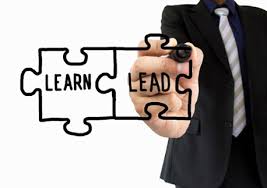 I wish to develop flexibility in order to progress through my MBA. This is an important skill because in most of the times, I am presented with challenging assignments and class activities which require much research and time management; without flexibility in my duties, I would not be able to complete them effectively. On the other hand, I need to be analytical, this is a vital skill in problem solving and decision making. Analytical would be perfect for me to progress through my MBA since it would present me with opportunities on decision making during group discussions and also how to handle issues of culture that have been considered to create conflict not only in the group discussions but also in future organizations. As a student, I need to constantly make decisions, which would help me progress in my MBA and make a successful career in leadership and management.
I wish to develop flexibility in order to progress through my MBA. This is an important skill because in most of the times, I am presented with challenging assignments and class activities which require much research and time management; without flexibility in my duties, I would not be able to complete them effectively. On the other hand, I need to be analytical, this is a vital skill in problem solving and decision making. Analytical would be perfect for me to progress through my MBA since it would present me with opportunities on decision making during group discussions and also how to handle issues of culture that have been considered to create conflict not only in the group discussions but also in future organizations. As a student, I need to constantly make decisions, which would help me progress in my MBA and make a successful career in leadership and management.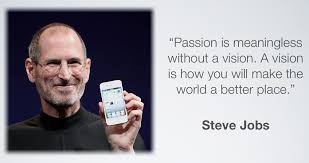
 Change is quite “inseparable” when it comes to social and the business life and that any organization is subject to change at any point in their lives. In order to ensure efficiency and maintain the competitiveness within the market, organizations need to adapt to changes in the environment. Based on the idea of Mullins (2010) change is a simple fact in the lives of people and it is not considered as something new since it is continuous. However, what is significant is how people adjust to this change, while some can be able to adjust, to others, it is not possible as they prefer the status quo. Management is essential to manage change as proposed, something that Mullins does not emphasize. Note that change depends highly on the managers rather than employees and hence it is down to the management to make people understand on the importance of change to avoid resistance.
Change is quite “inseparable” when it comes to social and the business life and that any organization is subject to change at any point in their lives. In order to ensure efficiency and maintain the competitiveness within the market, organizations need to adapt to changes in the environment. Based on the idea of Mullins (2010) change is a simple fact in the lives of people and it is not considered as something new since it is continuous. However, what is significant is how people adjust to this change, while some can be able to adjust, to others, it is not possible as they prefer the status quo. Management is essential to manage change as proposed, something that Mullins does not emphasize. Note that change depends highly on the managers rather than employees and hence it is down to the management to make people understand on the importance of change to avoid resistance.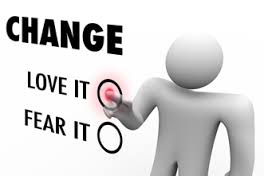 People respond to change differently. While others may accept change, others would oppose change as stated by Mullins. This is as a result of comfort, habit or insecurity. But people who recognize the change drivers and then implement are change drivers (Yukl 2008). When these people understand the reasons for resistance, then they are likely to bring success in change. I disagree with Mullins that there is nothing management can do about resistance because change need to be done by making others understand its importance and following step by step procedure as proposed by Kotter 8 step model.
People respond to change differently. While others may accept change, others would oppose change as stated by Mullins. This is as a result of comfort, habit or insecurity. But people who recognize the change drivers and then implement are change drivers (Yukl 2008). When these people understand the reasons for resistance, then they are likely to bring success in change. I disagree with Mullins that there is nothing management can do about resistance because change need to be done by making others understand its importance and following step by step procedure as proposed by Kotter 8 step model.

 t to come up with an effective program on improving my decision making skills such as working on internship programs where I will learn on how HR professionals create an environment in which others develop decisions on role clarification and take responsibility on their actions. In so doing, I will understand how organization manage complex issues to come up with sustainable solutions. In addition, I wish to practice in small group on the skills of decisive thinker so as to get feedback about my progress.
t to come up with an effective program on improving my decision making skills such as working on internship programs where I will learn on how HR professionals create an environment in which others develop decisions on role clarification and take responsibility on their actions. In so doing, I will understand how organization manage complex issues to come up with sustainable solutions. In addition, I wish to practice in small group on the skills of decisive thinker so as to get feedback about my progress. It is important to note that leadership and management are similar yet different in nature. According to Horwitz & Klontz (2013) management is defined as a process that helps organizations to meet their goals through working with individuals and the resources within the organization. It has three major characteristics that include: a series of continuous as well as related activities, it is concentrated on meeting the goals of an organization and meets the goals by being able to work with people and the resources in the organization (Taylor et al 2015). On the other hand, leadership is considered as the ability of a person to inspire or to have an influence on others to meet organizational goals. This means that leaders have followers.
It is important to note that leadership and management are similar yet different in nature. According to Horwitz & Klontz (2013) management is defined as a process that helps organizations to meet their goals through working with individuals and the resources within the organization. It has three major characteristics that include: a series of continuous as well as related activities, it is concentrated on meeting the goals of an organization and meets the goals by being able to work with people and the resources in the organization (Taylor et al 2015). On the other hand, leadership is considered as the ability of a person to inspire or to have an influence on others to meet organizational goals. This means that leaders have followers. In a research by Horwitz and Klontz (2013) they evaluated the distinction between the leaders and the managers. The findings showed that how they both motivate individuals is a major distinction between the two, the way they think or act. Managers have been considered to place more emphasis on control, how to solve issues, goals and targets. In so doing, they are able to combine the various conflicting ideas so that people accept to them but then, the leaders are quite different to this. Leaders offer a new approach and create new issues for discussion. They develop visions, influence culture in the organizations and then inspire others. Ibra and Hansen (2011) asserts that leaders can be viewed to have administrative work and the managers find it essential to lead others so that some work is done.
In a research by Horwitz and Klontz (2013) they evaluated the distinction between the leaders and the managers. The findings showed that how they both motivate individuals is a major distinction between the two, the way they think or act. Managers have been considered to place more emphasis on control, how to solve issues, goals and targets. In so doing, they are able to combine the various conflicting ideas so that people accept to them but then, the leaders are quite different to this. Leaders offer a new approach and create new issues for discussion. They develop visions, influence culture in the organizations and then inspire others. Ibra and Hansen (2011) asserts that leaders can be viewed to have administrative work and the managers find it essential to lead others so that some work is done. Although it is possible to note that some the major things discussed above can the in “team development”, it is likely that the others cannot be. Taking assumptions that present workforce has millennial subordinates which falls into Kellerman’s five kinds of leadership means that we are concerned on what they need. Situational leadership place focus on managing individuals based on the kind of situation that one finds them in and this is in line to the CMI view suggested in 2013.
Although it is possible to note that some the major things discussed above can the in “team development”, it is likely that the others cannot be. Taking assumptions that present workforce has millennial subordinates which falls into Kellerman’s five kinds of leadership means that we are concerned on what they need. Situational leadership place focus on managing individuals based on the kind of situation that one finds them in and this is in line to the CMI view suggested in 2013. For instance, Tom Cook of Apple uses democratic form of leadership because he has been able to adopt the previous practices on entrepreneurship in the company to come up with a unique blend where he majorly focuses on the existing products and foster the business as well as relationships with employees. However, this kind of management style may not be adequate to all the various kinds of organizations faced with issues on accountability. This is in contrast to the former CEO Steve Jobs who was visionary, charismatic and always thoughtful by the employees of Apple. This form of leadership was control in the decision making and less input from the members of the organization.
For instance, Tom Cook of Apple uses democratic form of leadership because he has been able to adopt the previous practices on entrepreneurship in the company to come up with a unique blend where he majorly focuses on the existing products and foster the business as well as relationships with employees. However, this kind of management style may not be adequate to all the various kinds of organizations faced with issues on accountability. This is in contrast to the former CEO Steve Jobs who was visionary, charismatic and always thoughtful by the employees of Apple. This form of leadership was control in the decision making and less input from the members of the organization.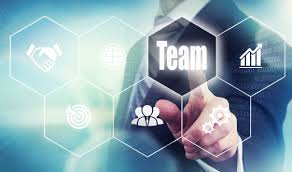 From what I have learnt in term 2, I have demonstrated the CIPD professional behavior in terms of being determined to deliver the class assignments across the term period. For example, the module learning outcome on recruitment and selection has been essential since I can now develop the right HR strategy for recruitment process and the mode of recruitment process. This is important for any HR professional to demonstrate such behavior in an organization. One of the ways in which I demonstrated this behavior was on how I handled the new Performance Management and Reward Management System, I have shown consistent strong bias towards delivering the policies, developed the steps which were meant to guide delivering of these policies as guidance and show commitment to deliver results when faced with challenges.
From what I have learnt in term 2, I have demonstrated the CIPD professional behavior in terms of being determined to deliver the class assignments across the term period. For example, the module learning outcome on recruitment and selection has been essential since I can now develop the right HR strategy for recruitment process and the mode of recruitment process. This is important for any HR professional to demonstrate such behavior in an organization. One of the ways in which I demonstrated this behavior was on how I handled the new Performance Management and Reward Management System, I have shown consistent strong bias towards delivering the policies, developed the steps which were meant to guide delivering of these policies as guidance and show commitment to deliver results when faced with challenges. Globalization and the changes in terms of demographic patterns have had an impact on the organizations on developing teams from varied cultural backgrounds, values and expectations on working to meet organizational goals (Ibra & Hansen 2011). In order for organizations to increase their presence across the world, they make use of diverse teams. People from different disciplines, cultures and generations provide unique perspectives on coming up with likely solutions, knowledge on the market and understanding on technology. The impact of globalization means that the world continues to be smaller. According to a recent research, diversity in the global market is placed into three categories in line to their characteristics and include the primary personal traits for instance age, gender, nationality or physical ability; secondary personal characteristics for instance the education level, values and beliefs and also organizational for instance hierarchy (Garcia 2006).
Globalization and the changes in terms of demographic patterns have had an impact on the organizations on developing teams from varied cultural backgrounds, values and expectations on working to meet organizational goals (Ibra & Hansen 2011). In order for organizations to increase their presence across the world, they make use of diverse teams. People from different disciplines, cultures and generations provide unique perspectives on coming up with likely solutions, knowledge on the market and understanding on technology. The impact of globalization means that the world continues to be smaller. According to a recent research, diversity in the global market is placed into three categories in line to their characteristics and include the primary personal traits for instance age, gender, nationality or physical ability; secondary personal characteristics for instance the education level, values and beliefs and also organizational for instance hierarchy (Garcia 2006). From this model, it is clear that cultural diversity or diversity teams are both two areas that organizations can build competitive advantage (Knight et al 1999). This is by building skills so as to handle different behaviors to meet organizational goals, develop knowledge to understand the weakness and strengths of different cultural setting on management and to build awareness on cultural differences. However, issues of diverse teams such as conflict on the workers may have an impact on success of firm when not handled well. Despite that, note that ability to lead diverse teams is an important way to competitiveness and that ability of dealing with the differences is a major feature that is become a major element to being a good leader and ensuring effectiveness in firms.
From this model, it is clear that cultural diversity or diversity teams are both two areas that organizations can build competitive advantage (Knight et al 1999). This is by building skills so as to handle different behaviors to meet organizational goals, develop knowledge to understand the weakness and strengths of different cultural setting on management and to build awareness on cultural differences. However, issues of diverse teams such as conflict on the workers may have an impact on success of firm when not handled well. Despite that, note that ability to lead diverse teams is an important way to competitiveness and that ability of dealing with the differences is a major feature that is become a major element to being a good leader and ensuring effectiveness in firms. Managing diversity is the most important skills within the telecommunications industry as a result of being involved with people from different cultures. Diversity in teams create challenges on group cohesion and hence this may require additional skills such as communication skills, problem solver and analytic and builds relationships (Garcia 2006). Combinations of these skills are essential in order to build diverse teams effectively. Based on Gardenswartz and Rowe’s (1994) Four Layers of Diversity Model, it can be noted that people have four layers and in each it defines an individual. They include personality, external dimension, internal dimension and organizational dimension which help a leader to understand his team and the individual attributes in them to have effective teams. For example, Apple has built strong teams through diversity and inclusion where they have taken a holistic view. Currently, the organization has 32 % of global female and new hires are 37 %; this shows an ongoing commitment to inclusion and diversity within the firm. These have been attributed to different leadership skills to get appropriate talent (Ghhroodi et al 2013).
Managing diversity is the most important skills within the telecommunications industry as a result of being involved with people from different cultures. Diversity in teams create challenges on group cohesion and hence this may require additional skills such as communication skills, problem solver and analytic and builds relationships (Garcia 2006). Combinations of these skills are essential in order to build diverse teams effectively. Based on Gardenswartz and Rowe’s (1994) Four Layers of Diversity Model, it can be noted that people have four layers and in each it defines an individual. They include personality, external dimension, internal dimension and organizational dimension which help a leader to understand his team and the individual attributes in them to have effective teams. For example, Apple has built strong teams through diversity and inclusion where they have taken a holistic view. Currently, the organization has 32 % of global female and new hires are 37 %; this shows an ongoing commitment to inclusion and diversity within the firm. These have been attributed to different leadership skills to get appropriate talent (Ghhroodi et al 2013). A major challenge to having effective leadership on management of diverse teams is on ethnocentrism, this is where a person considers their culture as being better than others (Knight et al 1999). Such a manager cannot be able to recognize the distinct perspective of the other people. In managing diverse teams, effectiveness of the manager is based on openness and tolerance on the cultural practices of individuals. This influences the success of firms to produce better results as the employees feel that their cultures have been well represented in decision making. Global firms such as Apple have come up with the diversity management which is part of their global strategy. The managers in the company have developed diverse teams who understand local markets and hence help them in continued growth and expansion and this has influenced the good results in the firm.
A major challenge to having effective leadership on management of diverse teams is on ethnocentrism, this is where a person considers their culture as being better than others (Knight et al 1999). Such a manager cannot be able to recognize the distinct perspective of the other people. In managing diverse teams, effectiveness of the manager is based on openness and tolerance on the cultural practices of individuals. This influences the success of firms to produce better results as the employees feel that their cultures have been well represented in decision making. Global firms such as Apple have come up with the diversity management which is part of their global strategy. The managers in the company have developed diverse teams who understand local markets and hence help them in continued growth and expansion and this has influenced the good results in the firm. Ethical leadership is defined as a “demonstration on the normative appropriateness conduct on the personal actions and interpersonal relationships as well as promotion on
Ethical leadership is defined as a “demonstration on the normative appropriateness conduct on the personal actions and interpersonal relationships as well as promotion on 
 values, identify the vision where the world could be different and be able to look for a personal voice in order to express that vision. Then after that, development of leadership need to move towards outer commitment for living and then behaving in a way which serves a common good. The objective of leadership is to influence a world to be visionary and then inclusive and ensure that members of an organization meet the goals and their potential.
values, identify the vision where the world could be different and be able to look for a personal voice in order to express that vision. Then after that, development of leadership need to move towards outer commitment for living and then behaving in a way which serves a common good. The objective of leadership is to influence a world to be visionary and then inclusive and ensure that members of an organization meet the goals and their potential.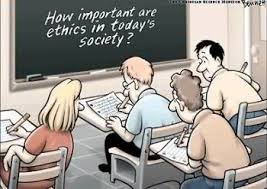 This suggests that ethical leadership can have a positive impact on the individual and effectiveness in organizations. This is because the behavior of an individual is derived through observation and modeling on the behavior of their leaders, attitudes and emotions. This influences effectiveness in organization by creating job satisfaction and commitment when leaders observe ethical leadership that is in line to the core values of individuals and the organization. For example, the ability for the investors and any aspiring minds to have an idea of their own is vital in a fair society. However, a number of examples on the intellectual property that is being taken by the major corporations is an example of unethical behavior. More so, Thomas Edison and his firms have grown successfully as a result of the wealth such as Radio Corporation of America and General Electric who have always tried to abuse patent system in order to be profitable (Ghahroodi et al 2006). Although this created benefits for the organization, it is bad form of leadership that is unethical.
This suggests that ethical leadership can have a positive impact on the individual and effectiveness in organizations. This is because the behavior of an individual is derived through observation and modeling on the behavior of their leaders, attitudes and emotions. This influences effectiveness in organization by creating job satisfaction and commitment when leaders observe ethical leadership that is in line to the core values of individuals and the organization. For example, the ability for the investors and any aspiring minds to have an idea of their own is vital in a fair society. However, a number of examples on the intellectual property that is being taken by the major corporations is an example of unethical behavior. More so, Thomas Edison and his firms have grown successfully as a result of the wealth such as Radio Corporation of America and General Electric who have always tried to abuse patent system in order to be profitable (Ghahroodi et al 2006). Although this created benefits for the organization, it is bad form of leadership that is unethical.